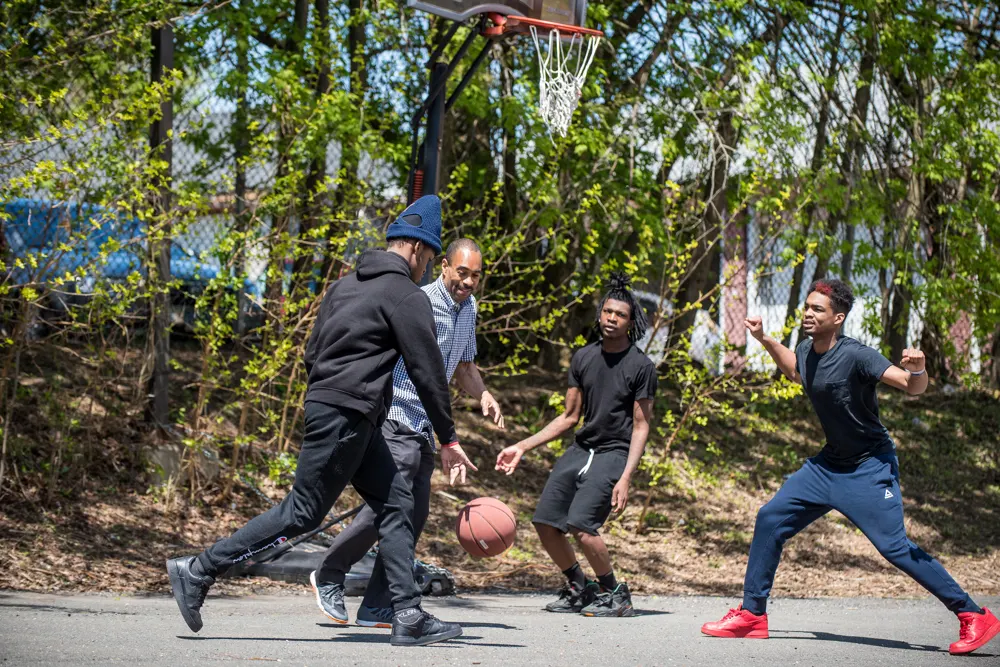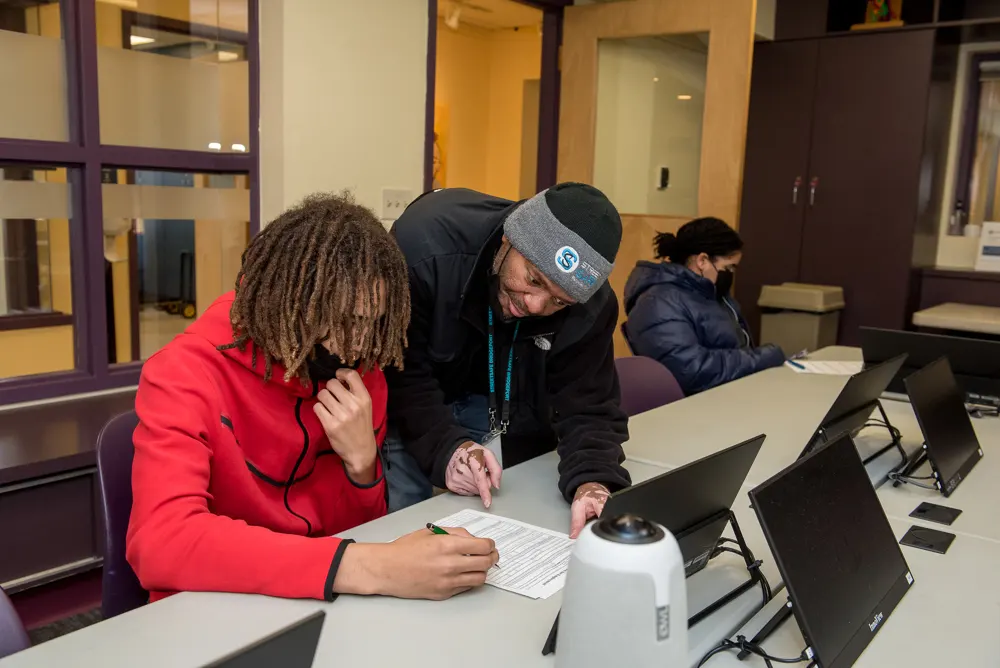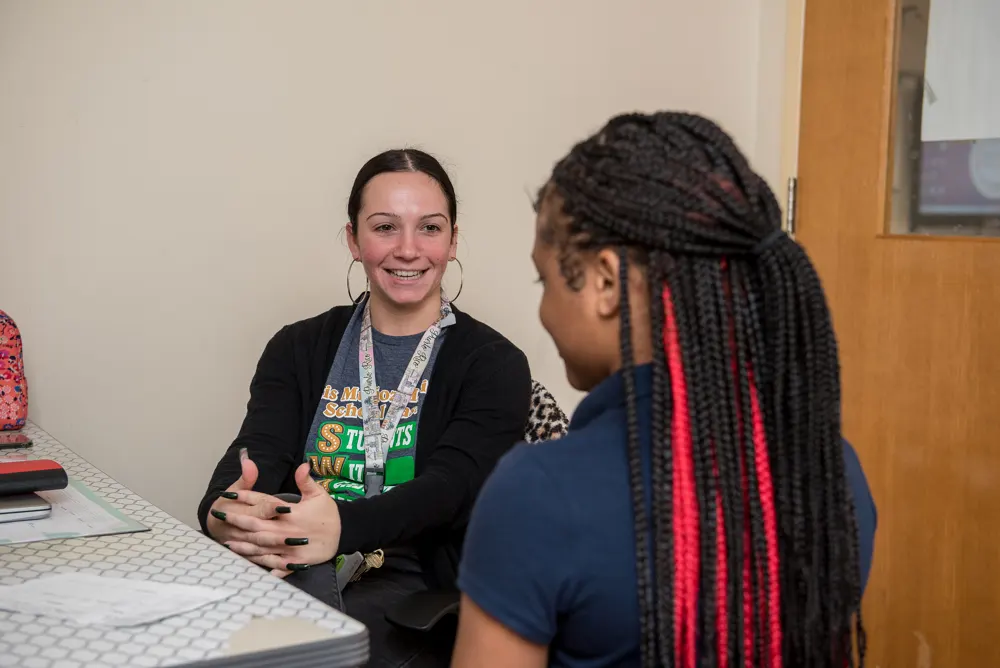Our Young People
CTOP’s social investments are designed to benefit young people ages 14 to 26 who are severely off-track or disconnected from education and employment.
 The young people who are part of CTOP’s target population face structural, institutional, and other complex challenges. They are disproportionately more likely to identify ethnically as Black or Hispanic and to live in systemically under-resourced communities. The conditions young people experience as a result of overt and tacit kinds of racism, limited access to resources, and chronic traumas often endemic to multi-generational poverty are a function of pervasive systemic inequities that can lead to the presentation of “risk indicators,” which CTOP uses to describe our target population and differentiate among sub-groups within it. Our purpose for doing so is to ensure we invest in nonprofits serving the young people we intend to reach, and then subsequently that we can best support our grantee partners in their efforts to design their programming and services in response to the specific needs of the youth they serve so that they can deliver positive, long-term outcomes.
The young people who are part of CTOP’s target population face structural, institutional, and other complex challenges. They are disproportionately more likely to identify ethnically as Black or Hispanic and to live in systemically under-resourced communities. The conditions young people experience as a result of overt and tacit kinds of racism, limited access to resources, and chronic traumas often endemic to multi-generational poverty are a function of pervasive systemic inequities that can lead to the presentation of “risk indicators,” which CTOP uses to describe our target population and differentiate among sub-groups within it. Our purpose for doing so is to ensure we invest in nonprofits serving the young people we intend to reach, and then subsequently that we can best support our grantee partners in their efforts to design their programming and services in response to the specific needs of the youth they serve so that they can deliver positive, long-term outcomes.
Severely Off-Track. CTOP uses this term to differentiate a sub-group of young people who are enrolled in high school but show one or more indicators of being at risk of dropping out, which include chronic absenteeism, failure to earn credits in a timely way, and/or 2+ suspensions; additionally, these young people have been failed by the traditional high school environment to the extent that they need intensive additional supports to get back on track to graduate – whether provided within the traditional high school context or an alternative education setting – such as mentoring and comprehensive case management that incorporates trauma-informed practices.
 Disconnected. CTOP uses this term to differentiate a sub-group of young people who do not have a high school diploma and are not enrolled in school or work; or, who do have a high school diploma but are not participating in post-secondary education or the workforce in a sustained way. Disconnected youth have experienced one or more of the following traumatic life events, which we classify as risk indicators, in alignment with the broader evidence base on factors that increase an individual’s likelihood for becoming disconnected: involvement with the juvenile or criminal justice system, involvement with the Department of Children and Families including placement in foster care, periods of homelessness, and/or exposure to violence, either by perpetrating it or being victimized by it. For operational purposes in supporting grantees in designing and delivering effective programming that is customized to the needs of the young people they serve, we further differentiate between the following two sub-groups based on their readiness to engage in such programming:
Disconnected. CTOP uses this term to differentiate a sub-group of young people who do not have a high school diploma and are not enrolled in school or work; or, who do have a high school diploma but are not participating in post-secondary education or the workforce in a sustained way. Disconnected youth have experienced one or more of the following traumatic life events, which we classify as risk indicators, in alignment with the broader evidence base on factors that increase an individual’s likelihood for becoming disconnected: involvement with the juvenile or criminal justice system, involvement with the Department of Children and Families including placement in foster care, periods of homelessness, and/or exposure to violence, either by perpetrating it or being victimized by it. For operational purposes in supporting grantees in designing and delivering effective programming that is customized to the needs of the young people they serve, we further differentiate between the following two sub-groups based on their readiness to engage in such programming:
- Young people who are moderately disconnected have typically experienced multiple traumatic life events over the course of their childhood and these traumas, particularly as they compound, undermine a young person’s ability to trust. Meanwhile, the accompanying fear and stress impacts the brain, shifting it into a “fight or flight” mode. As a result of these factors, young people who are moderately disconnected are reluctant to engage in programming initially and must be recruited through outreach, though over time they can be enrolled into full programs providing youth development and skills-building services.
- Young people who are severely disconnected have typically experienced a lifetime of trauma, including repeated exposure to violence, which hijacks the brain into permanent survival mode. They are deeply mistrustful due to their life experiences and as a result are not ready, willing, or able to engage in youth development programming. They must be pursued relentlessly by a youth worker over a long period of time lasting months or more, over the course of which the youth worker begins to establish a foundation of trust and safety, opening the door to the delivery of programming.
 To better understand the experiences of young people who are severely off-track and disconnected, and to identify ways nonprofits, agencies, and communities can work most effectively to support young people in achieving success, Dalio Education commissioned a series of research reports. The first, Connecticut’s Unspoken Crisis, published in October 2023 by the Boston Consulting Group, analyzes data from the state’s longitudinal data system and reveals that disconnection is affecting young people in every town in the state, increasing their risk of more negative life outcomes, and costing Connecticut’s economy every year.
To better understand the experiences of young people who are severely off-track and disconnected, and to identify ways nonprofits, agencies, and communities can work most effectively to support young people in achieving success, Dalio Education commissioned a series of research reports. The first, Connecticut’s Unspoken Crisis, published in October 2023 by the Boston Consulting Group, analyzes data from the state’s longitudinal data system and reveals that disconnection is affecting young people in every town in the state, increasing their risk of more negative life outcomes, and costing Connecticut’s economy every year.
